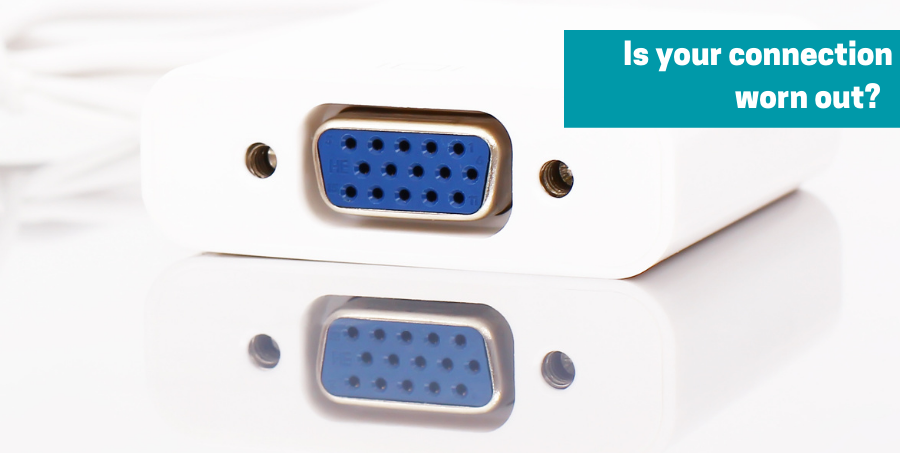Signs that you need to replace your SVGA splitter

Like just about every physical object in the universe, that SVGA splitter you’ve been using to feed video signals from your PC to two different monitors or TVs is subject to wear and tear. Splitters are inevitably subject to cumulative mechanical stress, for example, every time you plug in or unplug the connectors.
But how do you know when that wear and tear has reached the point where you need to replace the splitter with a new one? We’ll give you five vital signs that it’s time to replace your old splitter.
As you’re already reading this article, it’s a fair bet that you also already know that SVGA is a significant video display quality standard upgrade on the older Video Graphics Array (VGA) standard. Hence the “S” prefix, which stands for “Super.” In other words, if you’re using an SVGA-standard screen, you’re grown accustomed to viewing exquisite high definition video quality and an incredible colour palette to go with it.
To put this in terms of pixel resolution, VGA delivered a resolution comprising 640 x 480 pixels. SVGA began with an original resolution of 800 x 600 four-bit pixels, which meant that each pixel could be in any one of 16 different colours. But after it was upgraded to 1024 x 768 eight-bit pixels (an upgrade process that is still ongoing), there is now no limit to the number of different colours that can be displayed.
All of which is a long way of saying: if you’re splitting the SVGA-standard signal from a single source to two or more monitors with a splitter, that splitter has got to be intact and up to the job if it’s to deliver the quality you’ve come to expect.
So, how do you tell if it’s starting to fail? The symptoms are somewhat similar to the kinds of signs you’d see if an HDMI cable was beginning to deteriorate through mechanical wear and tear. The five key ones to look out for are as follows:
- Your display picture is accompanied by “sparkling” or “shooting stars”.
- Your display picture starts to look fuzzy or blurry instead of the high definition you’d previously been used to seeing.
- One or more of you displays starts showing the picture intermittently, or (tell-tale sign) fails to show any image at all.
- The colour palette starts to look “wonky” with weird colours appearing.
- The sound accompanying the pictures on the displays starts to “break up” and become irritatingly intermittent.
If you notice one or more of these signs, check the pins in the splitter’s connectors. If any are sheared off or bent, the splitter needs to be replaced. If the pins seem fine, try plugging the connector into a different monitor. If you get any of the five signs we’ve enumerated, the original monitor isn’t the culprit; the splitter is probably faulty.
Should that be the case, take a look at the full range of high-quality, fairly-priced SVGA splitters we supply at Euronetwork.

